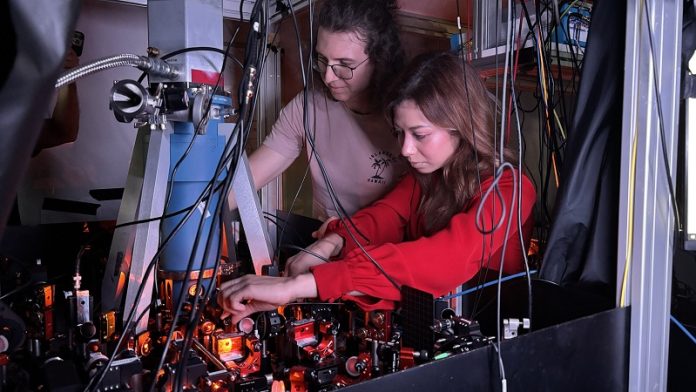
The way we live today is powered by information.
Every email we send, every video we stream, and every simulation scientists run on powerful computers depends on information stored and processed in the form of bits.
These classical bits can take on two values—0 or 1—and in electronic circuits they are usually represented by different voltage levels.
Devices like random-access memory, or RAM, make it possible to store and retrieve these bits quickly, which is why computers and smartphones can perform so many tasks on demand.
In recent years, scientists have been working toward a new type of information system—one based on the principles of quantum physics.
Instead of bits, quantum technologies use qubits, which are unique because they can exist as both 0 and 1 at the same time, a phenomenon called superposition.
This strange property could allow quantum computers and quantum networks to solve problems that are impossible for today’s digital machines. But to make such systems work, scientists also need a quantum version of RAM: a way to temporarily store qubits and recall them whenever needed.
That’s where researchers at ICFO (The Institute of Photonic Sciences in Spain) have made a breakthrough. Led by ICREA Professor Hugues de Riedmatten, a team including Dr. Markus Teller, Susana Plascencia, Cristina Sastre Jachimska, and Dr. Samuele Grandi has developed an array of ten individually controlled quantum memories.
Their achievement, published in Physical Review X, represents an important step toward building a solid-state quantum RAM.
The device is based on a praseodymium-doped crystal cooled to just 3 Kelvin, near absolute zero. Within this crystal, the researchers created memory “cells” capable of storing single photons—the particles of light that often carry quantum information.
By using laser pulses controlled by acousto-optical deflectors, they were able to write and read qubits into specific cells on demand. Remarkably, the photons preserved their quantum states with good fidelity even after being stored.
What makes this system particularly powerful is its flexibility. The team demonstrated two main ways of encoding qubits: by the path a photon takes into the array, and by the time the photon arrives, known as time-bin encoding.
They also showed that multiple time slots could be stored within each cell, which expands the memory’s capacity.
In one demonstration, they stored two qubits in time-bin encoding and retrieved them simultaneously, proving that the array can handle more complex operations.
This technology could have profound implications. In quantum computing, it might be used to build up large entangled states of photons—resources needed for powerful light-based quantum processors.
In quantum communications, it could transform quantum repeaters, devices that aim to extend secure quantum links across long distances.
Today, repeaters often face long pauses while waiting for success signals to confirm that entanglement has been created. With a memory array, researchers could keep attempting entanglement in parallel using different cells, speeding up the process dramatically.
The team acknowledges that more challenges lie ahead, such as increasing efficiency, extending storage time, and scaling up the number of memory cells. They also hope to one day store not just single qubits but entangled pairs, which are the lifeblood of quantum networks.
Even so, the results represent a major step forward. Just as classical RAM made modern computing possible, quantum RAM could be the key to unlocking the full potential of quantum technologies.
This experiment shows that such a future is no longer just theoretical—it’s steadily moving into reach.



